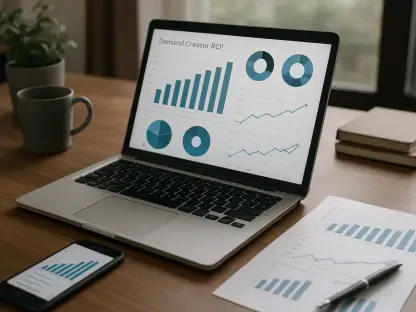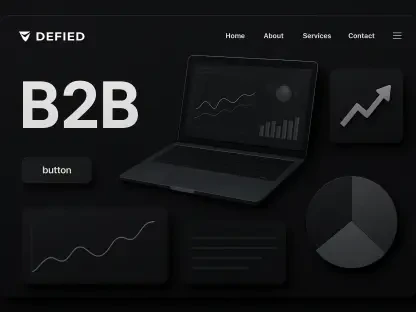I’m thrilled to sit down with Anastasia Braitsik, a global leader in SEO, content marketing, and data analytics. With her extensive expertise in the digital marketing realm, Anastasia has become a go-to authority for creators navigating the complex world of affiliate marketing. Today, we’re diving into the critical topic of affiliate link hijacking—a growing threat to creators’ revenue in 2025. Our conversation will explore how hijackers operate, the challenges of protecting affiliate links while maintaining transparency, and practical strategies for safeguarding income. Let’s uncover the insights that can help creators protect their hard-earned commissions.
Can you break down what affiliate link hijacking is in simple terms for those who might not be familiar with it?
Absolutely. Affiliate link hijacking is when someone, or something like a browser extension, intercepts or replaces a creator’s affiliate link with their own. This means the commission that should go to the creator for driving a sale ends up going to someone else. It’s like setting up a lemonade stand, getting customers to line up, and then someone else swoops in to collect the money at the last second. It’s sneaky, often invisible, and can seriously hurt a creator’s income.
Why do you think this issue has become such a major concern for creators in 2025?
Well, affiliate marketing has exploded as a primary revenue stream for many creators, especially with the rise of social platforms and e-commerce integrations. As more money flows through these links, it attracts bad actors who see an opportunity to siphon off profits. Plus, the tech used by hijackers—think browser extensions or sneaky scripts—has gotten more sophisticated. Combine that with gaps in how affiliate attribution works, and you’ve got a perfect storm where creators are losing earnings without even realizing it until it’s too late.
How does hijacking impact a creator’s bottom line, and could you share an example of the potential loss?
It can be devastating. Affiliate commissions often make up a huge chunk of a creator’s income, sometimes 30-50% or more. When links are hijacked, that revenue just vanishes. For example, imagine a tech reviewer on YouTube who drives $10,000 in sales through their links in a month. If a browser extension swaps out their affiliate ID on even 20% of those purchases, they could lose $2,000 in commissions. That’s real money that could’ve paid for equipment, editing help, or just basic living expenses. It adds up fast.
What are some of the most common tactics hijackers use to steal these commissions?
There are several tricks they pull. Browser extensions and coupon plug-ins are huge culprits—they overwrite a creator’s affiliate ID at checkout. Then there’s cookie stuffing, where hidden scripts plant affiliate cookies on a user’s browser without their knowledge, stealing credit for a sale. Malicious redirects swap links through shady ad networks or compromised sites, and last-click sniping happens when someone jumps in with a coupon or ad right before purchase to claim the commission. Each method exploits a different weak spot in the affiliate system.
Let’s dive into browser extensions a bit more. How do these tools interfere with a creator’s affiliate links?
Browser extensions, like coupon aggregators or cashback tools, often get installed by users who think they’re saving money. But behind the scenes, many of these tools have permission to alter web content. So, when a user clicks a creator’s affiliate link, the extension can swap out the creator’s ID with its own at the moment of purchase. The creator drove the traffic and trust, but the extension takes the payout. It’s frustrating because it’s so hard to detect unless you’re actively monitoring your links.
Can you explain pixel stuffing and cookie stuffing, and why they’re so damaging to creators?
Sure. Pixel stuffing involves hiding tiny, invisible tracking pixels on websites that drop affiliate cookies onto a user’s browser without them doing anything. Cookie stuffing is similar—it uses ads or scripts to force affiliate cookies onto someone’s device. Both tactics mean that when a user eventually buys something, the commission goes to the hijacker’s cookie, not the creator who actually influenced the decision. It’s damaging because it completely disconnects a creator’s effort from their reward, undermining the whole point of affiliate marketing.
What’s the story behind malicious redirects and link swaps, and how do they typically occur?
Malicious redirects and link swaps happen when hijackers insert themselves into the link journey. They might use shady ad networks or hack into plugins on a site to reroute a creator’s affiliate link through their own system, swapping the ID along the way. It can also happen on compromised landing pages where the redirect chain quietly replaces the original link. For creators, it’s a nightmare because it often looks legitimate on the surface, but behind the scenes, their earnings are being funneled elsewhere.
How does last-click sniping play out, and why does it feel so unfair to creators?
Last-click sniping is when a hijacker targets the final moment before a purchase. Since many affiliate programs use a “last-click wins” model, whoever’s link is clicked right before checkout gets the commission. A hijacker might use a retargeting ad or a coupon pop-up to steal that last click, even if a creator spent hours building trust and driving interest. It feels unfair because the creator did 90% of the work—research, content, engagement—but someone else swoops in at the finish line for the payout.
Turning to protection strategies, why did cloaking affiliate links become a popular defense for creators?
Cloaking started as a way to shield affiliate IDs from being easily stolen. By routing links through custom scripts or branded domains, creators could hide the raw affiliate structure from hijackers like extensions or scrapers. It also made links look cleaner and more professional, which helped with audience trust at first. Tools like Pretty Links made it easy, so it became a go-to tactic when creators realized how vulnerable their raw links were to substitution.
What are some of the drawbacks of cloaking, especially when it comes to building trust with an audience?
The biggest drawback is that cloaking can come off as deceptive if not done transparently. Audiences might not realize they’re clicking an affiliate link, which can erode trust if they feel misled. Plus, regulators and platforms are cracking down—cloaking without clear disclosure can violate guidelines like the FTC’s or get you banned from programs like Amazon Associates. So, while it might protect against hijackers temporarily, it risks alienating viewers and partners in the long run.
How can creators strike a balance between protecting their links and staying transparent with their viewers?
It’s about using tools that safeguard without hiding intent. Branded shortlinks, like shop.myname.com, are a great start—they protect the link while keeping your identity clear. Pair that with upfront disclosures, like a banner or comment saying, “These links may earn me a commission,” and you’re being honest. Monitoring tools can also help spot issues without resorting to opaque tactics. Transparency builds loyalty, and combining it with smart protection keeps both revenue and trust intact.
Why are contracts such a critical piece of the puzzle in preventing affiliate link hijacking?
Contracts are your legal backbone. They set clear rules with brands and networks about how your links are handled, who gets credit, and what happens if something goes wrong. Without a contract, you’re at the mercy of someone else’s policies or delays in resolving disputes. A good agreement can prohibit link substitution, guarantee you access to data if something looks off, and outline how disputes over commissions are settled. It’s your first line of defense before tech even comes into play.
What specific elements should creators make sure to include in those contracts to cover their bases?
Creators should push for clauses that explicitly ban third-party link swaps or interference from extensions. They should also include audit rights, so you can check click and conversion data if revenue drops unexpectedly. Another key piece is a clear process for resolving payout disputes—timelines, steps, and who’s responsible. These terms ensure you’re not just hoping for fairness but have enforceable protections if hijacking happens.
If a creator suspects their links have been hijacked, what’s the very first step they should take to address it?
The first step is to confirm the suspicion with data. Look at your analytics—if you see steady traffic but a sudden drop in commissions, that’s a red flag. Use monitoring tools to check if your affiliate IDs are being swapped or if clicks are redirecting oddly. Don’t jump to conclusions, but don’t wait either. Spotting the anomaly early gives you a better shot at gathering evidence and stopping further losses before they pile up.
What’s your forecast for the future of affiliate marketing protection as we move deeper into 2025 and beyond?
I think we’re heading toward a more regulated and tech-driven landscape. With high-profile cases raising awareness, platforms and networks will likely tighten attribution rules and offer built-in fraud protection tools. We’ll see creators and agencies lean harder into transparency—branded links and disclosures will become the norm over cloaking. At the same time, AI-powered monitoring will get smarter at detecting hijacking in real time. My forecast is that creators who invest in contracts, tools, and trust now will be the ones who thrive as the industry evolves to prioritize integrity over quick fixes.









